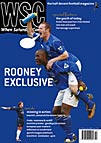 When the World Cup ended, many thought Japanese football would slump but, as Justin McCurry reports, the exact opposite has happened
When the World Cup ended, many thought Japanese football would slump but, as Justin McCurry reports, the exact opposite has happened
Strange things are happening at Gamba Osaka. It isn’t just that the perennial underachievers are closer than ever to winning J-League honours; they are doing so in front of crowds not seen since the heady days of the league’s launch ten years ago.
Banpaku, Gamba’s modest home in Osaka’s well-heeled northern suburbs, is not the only J-League ground enjoying a post-World Cup boom. Attendances are up across the board. The first division saw record crowds on July 20 and 21, with an average gate of 25,958. Several clubs broke their attendance records that weekend, and in the second division, 35,000 fans watched Albirex Niigata beat Mito Hollyhock 1-0 at the Big Swan stadium. All a far cry from the dog days of 1997, when clubs were haemorrhaging money and the average first division crowd was a paltry 10,131.
Not everyone thought the summer optimism would last long. No sooner had the football world packed its bags and bidden farewell to the Far East than the doom merchants in the Japanese media warned that the public, having gorged for a full month on the sweetmeats offered by the likes of Beckham and Ronaldo, would have no stomach for the more pedestrian fare served up by the J-League.
But they assumed – wrongly – that Japanese fans, saddled with the misfortune of living in a country with a short history of professional football, will always equate the foreign game with quality and authenticity, and look on their own as little more than a poor relation. The reality is more complicated.
The sale, since France 98, of Japan’s quartet of midfielders – Junichi Inamoto, Hidetoshi Nakata, Shinji Ono and Shunsuke Nakamura – to overseas clubs is a double-edged sword. Their absence creates interest in overseas leagues, and the publicity wins new converts to the game at home, but in some cases, the pain of parting can prove too much.
Take Inamoto. His many Japanese followers in the crowd at Loftus Road are not only expatriates; some belong to the growing breed of fans with the cash to spend on Premiership tours advertised in Japan’s weekly football magazines. It would be wrong to say that “Ina” isn’t missed at his former club, Gamba. Of course he is. But no one wants him back, since that will only happen if he fails in England.
But the loss of another gifted midfielder has shown how exporting talent can hurt the J-League. Yokohama F Marinos’ attendances dipped by thousands when Shunsuke Nakamura left in the summer to join Reggina in Serie A. With their best player on the other side of the world, Marinos slipped into a funk that destroyed their fan base and claimed the scalp of coach Sebastiao Lazaroni, who only a year earlier had saved them from relegation.
Other clubs are in similarly precarious positions. Gamba’s popularity owes much to World Cup skipper Tsuneyasu Miyamoto’s presence in defence, and Shimizu S-Pulse’s mediocrity is made just bearable by their glamorous forward pairing of Alex (linked with Charlton in the summer) and Ahn Jung Hwan, the South Korean international whose extra-time goal sent Italy out of the World Cup.
Still, football in Japan has much to look forward to. The Under-21s reached the final of last month’s Asian Games in South Korea, and were unlucky to lose to Iran. Zico’s appointment as national coach after Philippe Troussier left has proved a public relations success. The Brazilian was dismissed by some as the poodle of the Japan FA, but his first game in charge, a draw with Jamaica, suggested he is willing to allow gifted players the freedom they were denied by his predecessor.
But the biggest boost of all has come from the league’s less celebrated players, who have turned the current title race into the most exciting in recent memory. With less than a month of the season left, a handful of clubs are within reach of the second-stage title and a meeting with first-stage winners Jubilo Iwata in the championship decider.
Ten years ago the J-League was launched on a wave of mass marketing and gimmicks. It comes as something of a relief, in these leaner times, to find that Japanese football’s latest boost is being provided by something as simple as the game itself.
From WSC 190 December 2002. What was happening this month